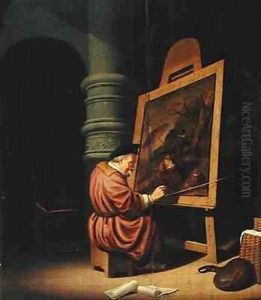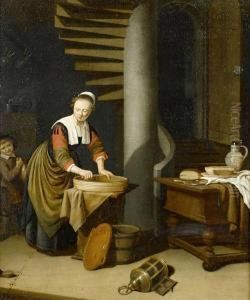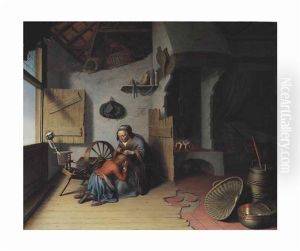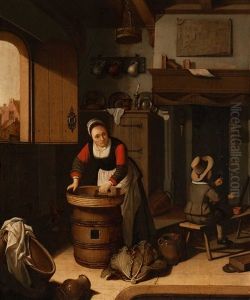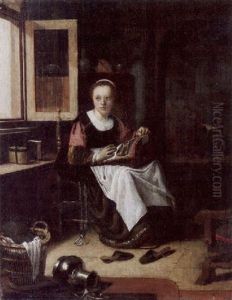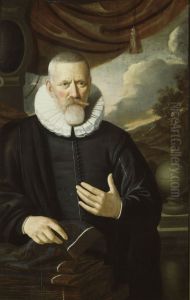Adriaen van Gaesbeeck Paintings
Adriaen van Gaesbeeck was a Dutch Golden Age painter, born in Leiden, the Netherlands, in 1621. His artistic journey began in his hometown, where the rich artistic culture of the Dutch Golden Age profoundly influenced his development as an artist. Although not as widely recognized as some of his contemporaries, van Gaesbeeck made significant contributions to the period's artistic achievements, specializing in genre scenes and portraits that captured the essence of his era with remarkable detail and emotional depth.
Van Gaesbeeck's training and early career were deeply rooted in the vibrant artistic community of Leiden. He was a pupil of Joris van Schooten, a prominent figure in the Leiden art scene, whose influence is evident in van Gaesbeeck's approach to composition and his handling of light and shadow. This apprenticeship was crucial in shaping his style, which blended the realism and attention to detail characteristic of Dutch painting of the time with a unique sensitivity to the subtleties of human expression and interaction.
Throughout his relatively short career, van Gaesbeeck produced a body of work that reflects the diversity of Dutch society during the Golden Age. His genre scenes, often set in taverns or homes, capture the everyday lives of people with an authenticity that invites viewers into the world he depicted. These scenes not only offer a glimpse into the social customs and practices of the time but also showcase van Gaesbeeck's skill in using light to create mood and atmosphere, drawing the viewer's attention to the narrative unfolding within the frame.
Despite his talent and the quality of his work, Adriaen van Gaesbeeck did not achieve the same level of fame as some of his peers. He died in Leiden in 1650, at the age of 29, leaving behind a modest but compelling portfolio that has attracted the attention of art historians and collectors in the centuries following his death. His contributions to Dutch art, particularly in the genre of genre painting, continue to be appreciated for their technical skill and their insightful portrayal of 17th-century Dutch life.
